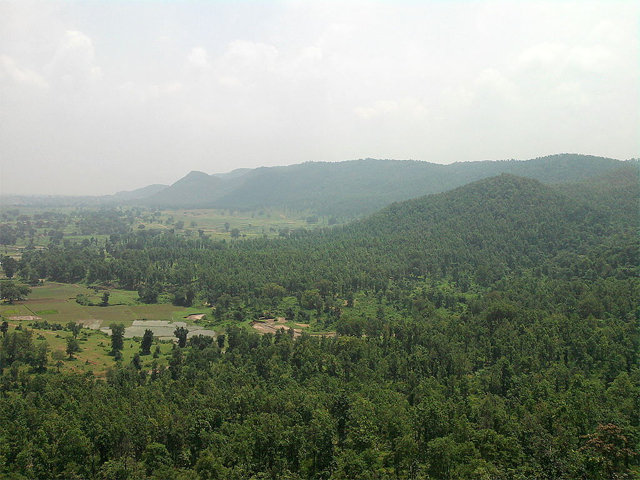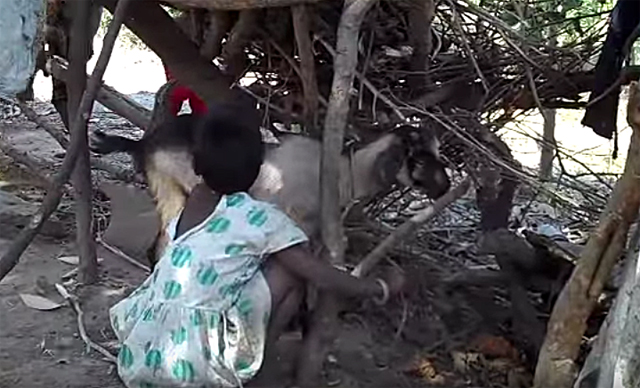According to a recent article in the Hindustan Times, some Birhor communities in India’s Jharkhand state do not have proper burial grounds. The reporter wrote that they cannot afford to buy land for their graveyards, so they are seeking assistance from the district government.

The Birhor interviewed by Manoj Choudhary, the Hindustan Times reporter, live in forest communities such as Tatiba, Kundrugutu, and Kayra in the West Singhbhum District of Jharkhand. They represent a tiny fraction of the tribal population of the state—0.06 percent of the 8.6 million tribals. Because the Birhor live in acute poverty and persist in their “archaic modes of living,” as the journalist wrote, they suffer from diseases and tend to die prematurely.
When they do, they are forced to bury the dead within their colonies next to their homes, and not in proper burial grounds outside the settlements. “The government has not allocated us land for [a] graveyard. So, we bury all the bodies in our colonies, near to our homes wherever we find [a] little vacant land available,” Vishnu Birhor from Tatiba village told the reporter.
Choudhary interviewed another member of the colony, Tulsi Birhor, who told him that during the time of her grandparents, when they were still roaming from one forest location to another, the people would throw the bodies of relatives who had died from the hills so the wild animals could consume them. In fact, when elderly people became too ill to move, the group would wait until they did die so they could then dispose of the body by throwing it from a hill.

In recent decades, government schemes have sought to settle the Birhor in permanent colonies. In addition to homes, the colonies have included vacant plots of land for raising goats and poultry and for planting kitchen gardens. Jyoti Meral, a member of the District Council of West Singhbhun, told Choudhary that the Birhor are using those plots as cemeteries for the burials of their dead.
So the Birhor of Tatiba have begun to demand a proper graveyard from the district government. In response, the government has asked the people of the village to identify the best spot for one. It has assured the community that it will provide the funds for its purchase.
Roy (1918) provided additional details about the funeral customs of the Birhor, at least as they existed 100 years ago. He wrote that the primary purpose of the funeral ceremony was to prevent any harm from coming to the tanda, the temporary settlement, from the spirit of the deceased; it was also performed to prevent stray spirits from harming the spirit of the recently deceased person. “Even the offering of food laid out for the spirit of the deceased appears to be prompted as much by a feeling of affection for him as from a fear of his spirit,” Roy wrote (p.313).

The Birhor that Roy studied either buried or cremated their dead—they didn’t throw them from hills. To prepare the body, it was washed before being anointed with oil and turmeric. A Birhor would place a vermilion mark on the forehead if the deceased had been married. The body would then be placed on a stretcher and carried head first by the men toward either the cremation ground or the burial ground. However, when women and children died within 21 days of childbirth, their spirits were considered to be dangerous for men, so only women could be the pall bearers.
In those cases, a mati, a spirit doctor, went into a state of possession and told the spirit of a hill or forest that he was making over the spirit of the deceased to him. “Guard her well and let her remain here,” he would say (p. 314). Hopefully, the spirit of the hill or forest would respond, out of the mouth of the mati of course, saying “I do take charge.” If the spirit addressed by the spirit doctor did not reply, however, the mati would address another spirit and then perhaps a third until one of them would agree to take charge of the dangerous corpse.
At the burial ground, located beyond the edge of the settlement, the corpse would be placed on the ground and then carried to the opened grave. It would be carried three times around the grave then laid in it flat, head pointing south. If the body was to be cremated, the son or grandson of the deceased would start the funeral pyre. Roy described the entire funeral ceremony in considerable detail without mentioning any casting of bodies from hilltops. That practice may have been unique among the Birhor in West Singhbhum District, though that is not clear.